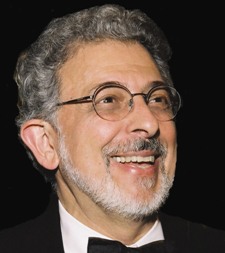Architecture in the Age of Neuroscience
San Diego, Calif., June 2, 2011 — By some estimates, modern humans spend 90 percent of their lives inside built environments. Yet neuroscientists are only just beginning to investigate how the human brain responds to these environments — and how architects can design structures to potentially enhance cognitive function.
|
A lecture and discussion last week at the University of California, San Diego, touched on some of the latest findings about the relationship between the brain and the built environment, including a surprising disconnect between designing for a healthy planet vs. designing for healthy brains. The event, “Great Expectations: Architecture in the Age of Neuroscience,” was held at the UC San Diego division of the California Institute for Telecommunications and Information Technology (Calit2) and was organized by the Academy of Neuroscience for Architecture (ANFA) in partnership with UCSD, the Salk Institute and the NewSchool of Architecture and Design.
Guest speaker Alison Whitelaw, senior principal of San Diego-based Platt/Whitelaw Architects, remarked that it’s possible for a building to qualify as ‘green’ according to internationally recognized standards established by Leadership in Energy and Environmental Design (LEED) “without meeting optional requirements for interior environmental quality, thermal comfort or daylight views.”
Yet as Whitelaw noted, at least one study by the Heschong Mahone Group demonstrated that daylight views in school buildings led to a 20 percent improvement in scores on math and reading tests. In other words, even as architects increasingly design high-performance buildings to meet LEED criteria for sustainability, they might be trivializing architectural aspects that are truly necessary for nurturing what Whitelaw calls “high-performance occupants.”
“What we still don’t know is if daylight impacts vision and cognition and therefore leads to better test scores, or if light impacts circadian rhythms and leads to better sleep, which would also have an impact on test scores,” she explains. “I’m not a neuroscientist, although sometimes I wish I were in order to gain a deeper insight these sorts of relationships.”
One way neuroscientists are exploring the connection between building construction and cognition is via the Calit2 StarCAVE, a 360-degree, 16-panel immersive virtual reality (VR) environment that enables researchers to interact with virtual architectural renderings in three dimensions, in real time and at actual scale. Led by Eduardo Macagno, founding dean of the UCSD Division of Biological Sciences and past president of ANFA, a team of researchers at Calit2 has developed an interactive and synchronized VR and electroencephalography (EEG) prototype in the StarCAVE to study the neural structures associated with way-finding, or the process one uses to navigate through architectural spaces.
Many in attendance at the event got a look at the StarCAVE and the newly developed CAVE-CAD software for designing architectural environments, which was funded through a generous gift from HMC Architects.
|
“EBD has added a new level of rigor to design,” said Whitelaw, “but what we need is a more complete definition of sustainable design, with a more appropriate set of protocols. A building that sustains its occupants will be valued and endure.”
Macagno, who delivered a commentary and led a discussion following Whitelaw’s remarks, called for continued collaboration between architects and neuroscientists and even suggested that architects consider adding a neuroscientist to their staff, “akin to hiring a consultant or acoustical engineer when building a concert hall.”
“Not only do we need to create an intellectual repository for the information that is gathered and translate it into a language that can be understood by individuals in both fields,” he added, “we also need to create career paths that merge these fields.
“Eventually, we can begin to develop insight into pathologies and begin to look at how the built environment affects defective or asocial brains. But we have to learn how the normal brain works first.”
Related Links
Academy of Neuroscience for Architecture
NewSchool of Architecture and Design
Media Contacts
Tiffany Fox, 858-246-0353, tfox@ucsd.edu


